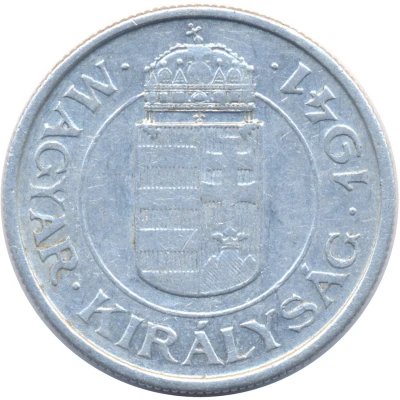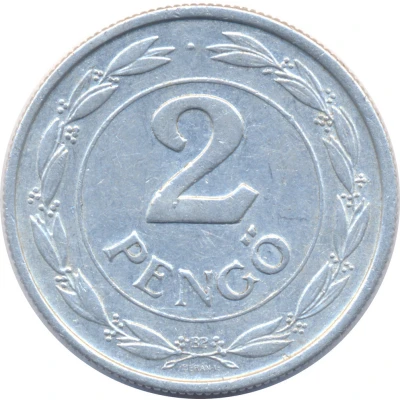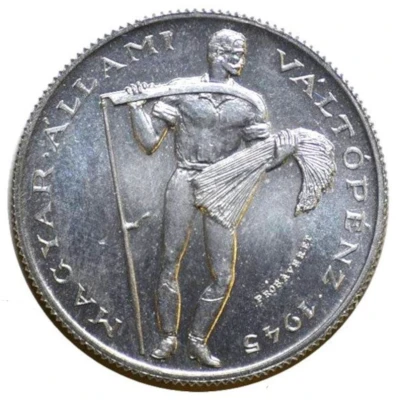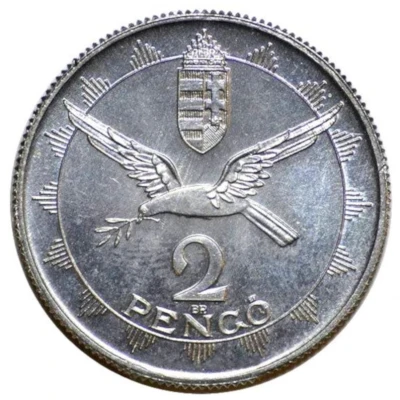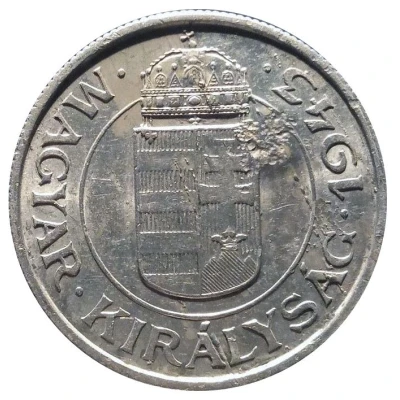
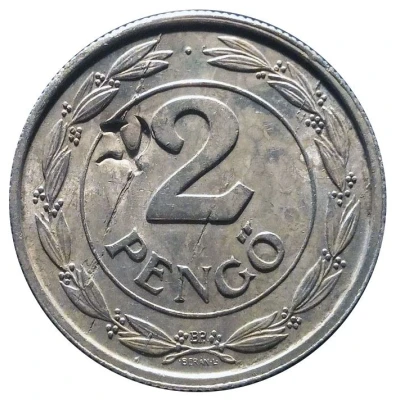

© harden13
2 Pengő - Miklós Horthy Red Army Counterstamp
| Aluminium | 2.8 g | 28 mm |
| Issuer | Hungary |
|---|---|
| Regent | Nicolas Horthy (1920-1944) |
| Type | Non-circulating coin |
| Years | 1941-1943 |
| Value | 2 Pengos (2 Pengő) |
| Currency | Pengo (1927-1946) |
| Composition | Aluminium |
| Weight | 2.8 g |
| Diameter | 28 mm |
| Thickness | 2.3 mm |
| Shape | Round |
| Technique | Milled, Counterstamped |
| Orientation | Medal alignment ↑↑ |
| Demonetized | 31 December 1945 |
| Updated | 2024-10-05 |
| Numista | N#44368 |
|---|---|
| Rarity index | 64% |
Reverse
Several thousands of 2 Pengő coins have been counterstamped with the sickle & hammer by the Soviet Russian Army, as they have occupying Hungary in 1944-1945
Script: Latin
Lettering:
2
PENGŐ
Engraver: Lajos Berán
Edge
Reeded
Comment
According to latest informations available, all the Red Army counterstamps on aluminium 2 and 5 Pengő coins are modern fakes. Rumours say that counterstamps on 1 Pengő coins were used for propagandic purposes, but they are very rarely original. Pictures are from the latest Hungarian catalogue. Pictures are from the latest Hungarian catalog (Ifj. Adamovszky István: Magyar érme katalógus 1848-2012).The counerstamp was usually placed on reverse, here is unusually on obverse.
Interesting fact
The 2 Pengő - Miklós Horthy (Red Army Counterstamp) coin was issued during World War II, specifically between 1941 and 1943, when Hungary was under German occupation. The coin features a counterstamp of the Soviet Union's hammer and sickle symbol, which was added to the coin after the Red Army occupied Hungary in 1944. This counterstamp was applied to coins that were already in circulation, as a way for the Soviet Union to assert its control over the country's currency. This coin is a rare and interesting example of how currency can be used as a tool for political propaganda and control during times of conflict.
